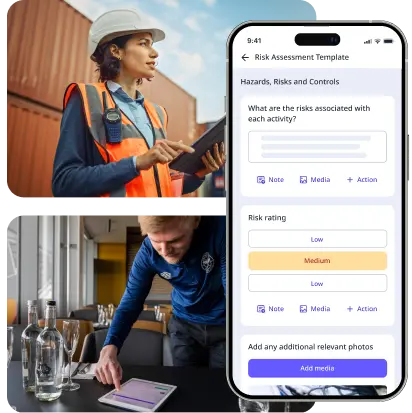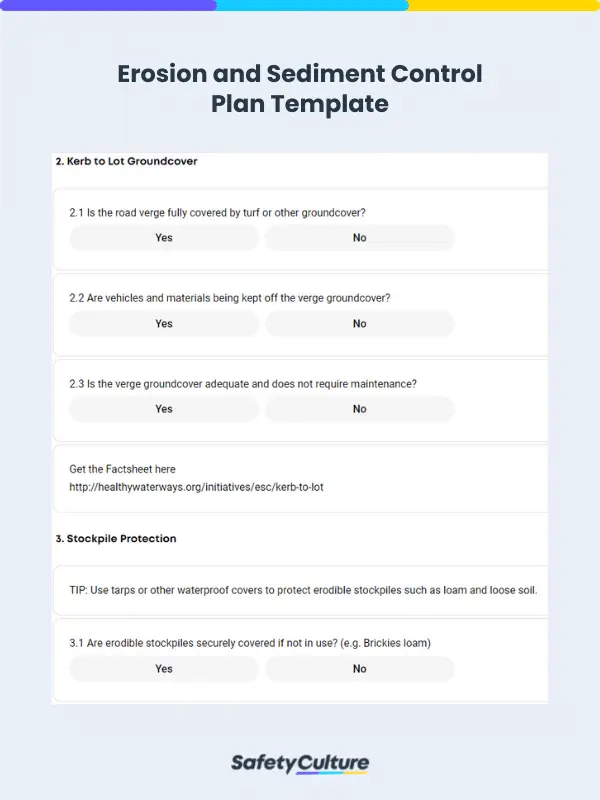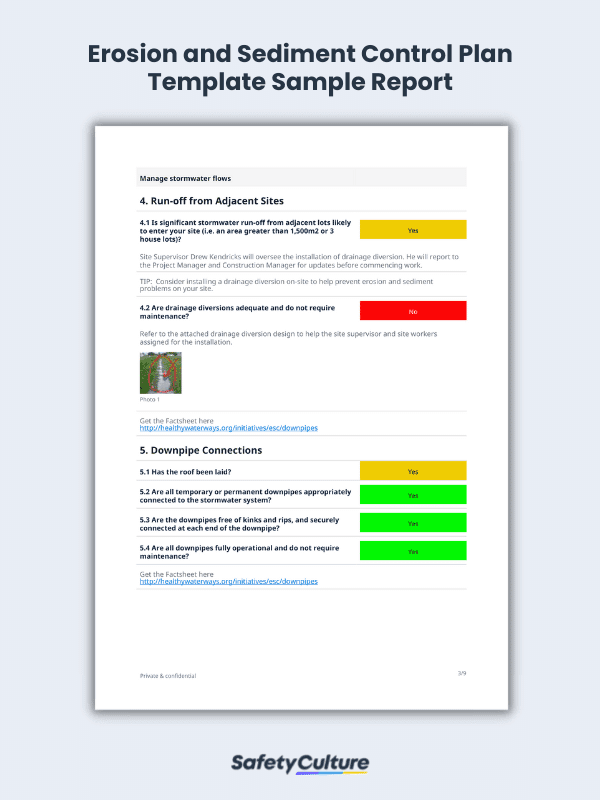What is an Erosion and Sediment Control Plan Template?
An erosion and sediment control plan template is a tool used by environmental engineers, construction managers, or site supervisors to ensure that necessary measures and control for risks related to the impact of erosion and sedimentation on the environment are in place. These control measures are typically applicable in construction projects where excavations are common in building a foundation for the site.
Why Use One
Since construction work involves disturbing the land, the people working and surrounding it as well as the environment face a high risk of being exposed to the impacts of erosion. Dirt and other waste from the dug-up soil may end up in water sources in the event of rain, flooding, or similar phenomena. To help everyone involved and those in charge of the construction project keep these risks at a minimum, a well-designed erosion and sediment control plan must be in place to achieve maximum construction safety.
Apart from the site map and construction schedule, this type of template is also a key component of the overall erosion and sediment control plan. This must be used in indicating the steps you need to take and follow to minimize the risks of erosion, provide ample sediment control, and implement Best Management Practices (BMPs) for the construction project. Since dealing with construction work entails a lot of processes to account for the project quality, worker safety especially when exposed to high-risk activities, and environmental impact, using digital tools like forms and checklist templates helps you keep everything in check and not miss out on important details.
Benefits of Using a Template
In a nutshell, using an erosion and sediment control plan template provides the following benefits:
- Having a streamlined process of keeping key aspects and requirements in check
- Implementing an improved way of inspecting relevant areas and construction activities
- Ensuring safe and quality protocols and measures are in place not just for the workers but also for the environment
What to Include in an Erosion and Sediment Control Plan Template
Depending on your project needs, your template for the overall erosion and sediment control plan should have the most basic sections and details. These include the following:
Allot a title or information page.
The first part of your template should allow you to list down a brief introduction of the plan. Details such as site location, inspection date, facilitator name, and instructions may also be included as well.
Dedicate separate pages for each aspect of your plan.
Each page may serve different purposes and have sub-sections on it. In detail, these sections may include the following:
- Soil Cover
- Kerb to Lot Groundcover
- Stockpile Protection
- Run-off from Adjacent Sites
- Downpipe Connections
- Entry/Exit Rock Pad
- Coarse Sediment Barriers
- Stormwater Inlet Protection
- Road and Verge Maintenance
Include a completion page.
Allot the last page of the template for the sign-off. The details you can include here are:
- Inspection notes
- Media attachments
- Signature
Sample Erosion and Sediment Control Plan Template
Now that you’re familiar with all the key sections and details that you should include, here’s an example of the template when used in SafetyCulture:
FAQs About Erosion and Sediment Control Plan Template
What is the purpose of an erosion and sediment control plan template?
How do you write an erosion and sediment control plan template?
Who is responsible for preparing the erosion and sedimentation control plan template?




